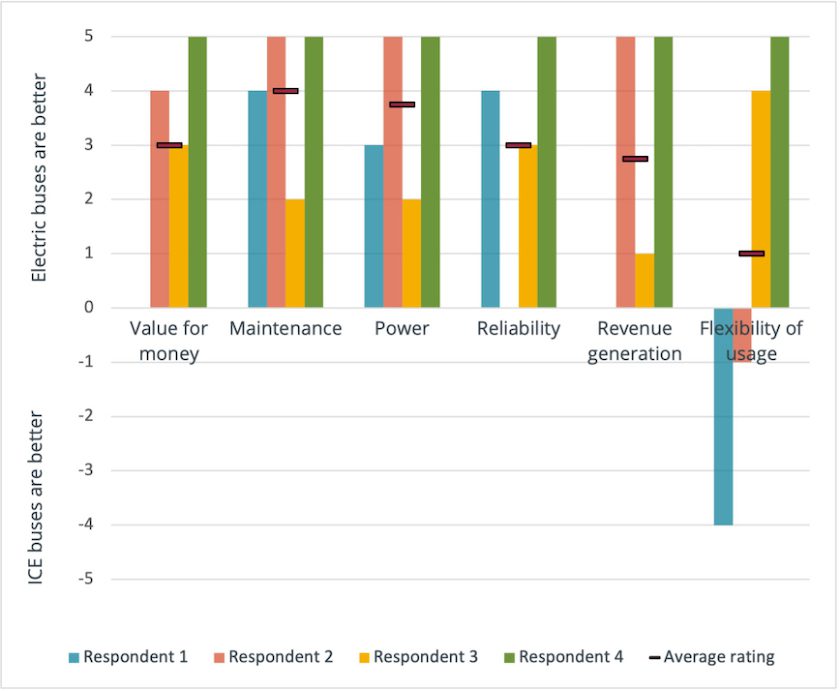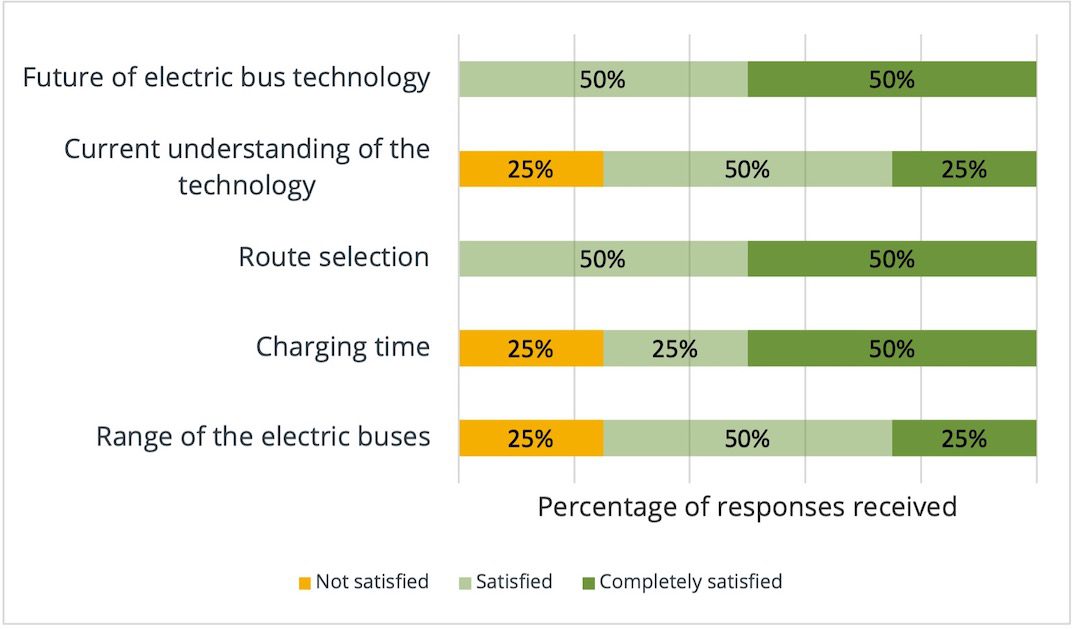Understanding the air quality and health impacts of large-scale vehicle electrification in India
Blog
Maharashtra’s transit authorities report positive experiences with electric buses
The first in a three-part series about our conversations with authorities in Pune, Mumbai, and Navi Mumbai.
Bus operation in India is undergoing a fairly dramatic transition with the advent of multiple new technologies. These include battery-electric and fuel-cell electric buses, and buses fueled by biofuels, compressed natural gas (CNG), hydrogen-infused CNG, and liquefied natural gas. Still, only the electric technologies offer zero tailpipe emissions, a benefit that can be essential for abating air pollution in cities, and battery-electric has the early advantage because fuel-cell technology is still under development.
Indeed, adoption of battery-electric buses (hereafter simply “electric buses”) is increasing rapidly in India. There are already over 3,000 of them in operation, and just a few months ago, India’s first demand aggregation scheme of 5,450 electric buses for five cities was successfully concluded. Separately, Mumbai is seeking to procure 3,000 electric buses; Pune has placed an order for 500 electric buses and is procuring 300 more; and Chennai recently released a tender for 100 electric buses and has funding in place to procure another 400 electric buses. The national government also announced that the next demand aggregation scheme will include multiple tenders for a whopping 50,000 electric buses to be deployed in the next 5 to 7 years.
Given all of this, we were interested in the experiences of those who’ve been using electric buses for some time already. To find out, from late 2021 to early 2022, we surveyed transit authorities in Pune, Mumbai, and Navi Mumbai that have more than 2 years of electric bus operational experience. The results are encouraging. We only sought out personnel who are experienced in electric bus planning and have technical and operational decision-making roles like (chief/executive) engineers and depot managers. We recorded four responses to a satisfaction survey and followed up with discussions to learn more about their choices. We also conducted detailed interviews with other personnel, and the full results will be published in an upcoming report. But before then there are some key insights that I want to share in this series of blog posts.
The satisfaction survey asked respondents to rate how the reliability, maintenance, power, and revenue generation of electric buses compares with their internal combustion engine (ICE) bus fleets, which are made up of diesel and CNG buses. The results are in Figure 1, where a positive score indicates electric buses are better, a negative score indicates ICE buses are better, and a score of zero indicates there’s no difference between the two. The average rating for electric buses was positive for all six parameters.

Figure 1. How electric buses compare with ICE buses, according to our satisfaction survey of transit authorities.
Survey highlight 1. While users report some challenges with flexibility, electric buses are more reliable, easier to maintain, and better for revenue generation than ICE buses.
In discussions, the respondents indicated that the electric buses are more reliable due to lower maintenance requirements and fewer breakdowns. They also said the electric buses attract more passengers due to the air conditioning (their ICE buses are mostly not air-conditioned) and smoother ride. Respondents were split regarding the flexibility of electric buses, and the challenges with flexibility mainly arose from the additional trips required for electric buses between the depot and the terminal for opportunity charging. However, this could be improved via better route planning, scheduling, and technology improvements such as batteries with better capacity, better chargers, and more energy-efficient electric buses.
The value for money question concerned whether the returns outweigh the investment for transit authorities. The returns can be financial, through things like lower operating costs and better revenue, or non-financial, such as better passenger experience and satisfaction. As you can see, the electric buses scored quite well.
Survey highlight 2. Respondents are happy with their current understanding of electric bus technology and are optimistic about its future.
We asked respondents to choose whether they are completely satisfied, satisfied, or not satisfied with various parameters associated with electric buses and found they are meeting operational expectations (Figure 2). The transit authorities are also largely satisfied with the current range of electric buses, their charging time, and route selection.

Figure 2. Satisfaction with electric buses, according to our survey of transit authorities.
We also asked decision makers from transit authorities to rank six different activities related to electric bus rollout, as this can guide others in the future. We recorded three responses to this activity-ranking survey and the results are in Table 1.
| Rank | Activity |
| 1 | Procurement planning |
| 2 | Long-term planning |
| 3 | Contract management |
| 4 | Financial planning |
| 5 | Support functions |
| 6 | Perception of various stakeholders |
Survey highlight 3. Bus procurement planning and long-term planning are most important for a successful electric bus rollout.
Bus procurement plans reveal the transit authorities’ plans for bus purchases in the future, especially a complete transition to electric. Long-term plans would include the business plans and infrastructure-expansion plans that are essential for guiding the future leadership of the authority. Contract management and financial management followed in the third and fourth spots, respectively. Financial planning is important for building the confidence of the operators and is probably ranked lower because transit authorities are usually supported through city and state budgets. Finally, the support functions, which include an intelligent transit management system (ITMS), route planning and scheduling, and monitoring and evaluation, ranked fifth, and stakeholder perception ranked sixth. Support functions might be ranked lower because the three transit authorities already have them in place to some degree. However, support functions can play a major role in dealing with the perception of reduced flexibility associated with electric buses.
All in all, the increasing electric bus adoption in India is an indication of maturing technology and satisfaction with performance to date. Our survey corroborated this. Thus, the government and transit authorities should rest assured that their investments in electric buses will offer better value for money than ICE buses. Additionally, those transit authorities that haven’t yet started can be confident in beginning the transition to full electric bus operations. The next blog post in this series will dive deeper into experiences with electric bus operations.
This is part of NDC Transport Initiative for Asia (NDC-TIA). NDC-TIA is part of the International Climate Initiative (IKI). IKI is working under the leadership of the Federal Ministry for Economic Affairs and Climate Action, in close cooperation with its founder, the Federal Ministry of Environment and the Federal Foreign Office. For more visit: https://www.ndctransportinitiativeforasia.org/.
